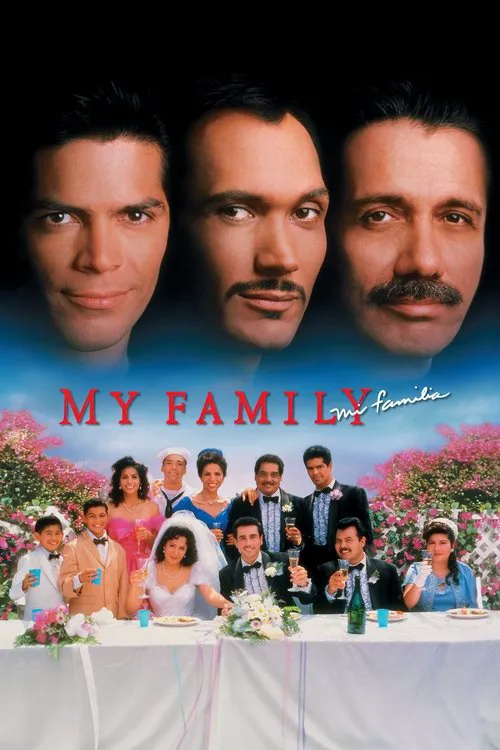My Family

Plot
My Family is a poignant and thought-provoking drama that delves into the complex lives of an immigrant family, spanning three generations. Set against the backdrop of Los Angeles, the film masterfully weaves together tales of love, loss, identity, and resilience. In the 1930s, Maria and Jose, two young immigrants from a foreign land, arrive in Los Angeles with dreams of a better life. Their journey is marked by struggles and hardship, but fate brings them together, and they soon find love in the midst of adversity. The obstacles they face, including deportation, serve as a stark reminder of the challenges that immigrants often encounter in their pursuit of the American Dream. Despite these difficulties, Maria and Jose persevere, and their relationship blossoms, laying the foundation for the family that will follow. Fast-forward to the 1950s, and the scene shifts to the family's establishment in East Los Angeles. Maria and Jose's children, Chucho, Paco, Memo, Irene, Toni, and Jimmy, grow up amidst the vibrant youth culture of the city. However, their lives are not without turmoil. The family struggles to navigate the complexities of growing up in a new environment, where cultural differences and societal pressures often clash. The children's encounters with the L.A. police, a reflection of the systemic injustices faced by immigrant families, serve as a poignant reminder of the systemic barriers that they must overcome. As the family's second generation enters adulthood in the 1960s, the focus shifts to Jimmy, one of Maria and Jose's children. Now a young man, Jimmy embarks on a journey of self-discovery, grappling with his own identity and the expectations placed upon him by his family and society. His marriage to Isabel, a Salvadorian refugee, marks a significant turning point in his life, as he confronts the harsh realities of racism and xenophobia. Isabel, too, brings her own set of challenges and experiences to the relationship, and together, they must navigate the complexities of cultural differences and power dynamics. The birth of Jimmy and Isabel's son represents a new chapter in the family's story, as the couple strives to become responsible parents and caregivers. Jimmy's journey to parenthood is marked by a mix of excitement, anxiety, and self-doubt, as he grapples with the responsibilities that come with raising a child. Isabel's experiences as a refugee and her observations of American culture also serve as a foil to Jimmy's perspective, highlighting the complexities of navigating different cultural norms and expectations. Throughout the film, director Gregory Nava explores themes of identity, family, and resilience, weaving together the narratives of multiple generations. The film's non-linear structure, leaping between different time periods and generations, creates a sense of continuity and connection between the characters. The use of vivid colors and rich textures also adds to the film's visual storytelling, drawing the viewer into the world of the Hernandez family. One of the film's greatest strengths is its nuanced portrayal of the immigrant experience. The Hernandez family's struggles and triumphs serve as a testament to the power of resilience and determination in the face of adversity. The film also sheds light on the complexities of family dynamics, exploring the tensions and conflicts that arise when cultural norms and expectations clash. Ultimately, My Family is a testament to the enduring power of love and family bonds. Despite the trials and tribulations they face, the Hernandez family remains bound together by their shared experiences and their love for one another. The film's conclusion, with Jimmy reflecting on his own journey as a parent and a member of a larger community, serves as a poignant reminder of the importance of family, culture, and community in shaping our identities and experiences.
Reviews
Recommendations




